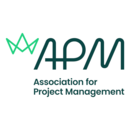Achieving high-performance teamwork
APM’s research in 2015, Conditions for Project Success identifies competent teams as a key requirement. This was reinforced by the 2021 Dynamic Conditions for Project Success which additionally identified team ethos and interpersonal skills. So how do you develop a high performing team? This event was held on 8 September 2022.
Research suggests that only 10% of teams are high-performing, 50% are average and 40% dysfunctional. Nick Fewings, author of best-selling book, Team Lead Succeed, shared some of his insights into how to achieve high-performance teamwork, based on his 10 years’ experience of leading teams and 20 years facilitating team development with teams around the world.
Nick has very kindly allowed his presented material to be made available for viewing.
The slides on Slideshare are now available in our APM resources area and also embedded below for reference.
Nick Fewings, Director of Ngagementworks
Nick calls himself a Teamologist, someone who specialises in the study of the dynamics of teamwork, using this knowledge, to help teams become more effective.
After a 20 year career in banking, working his way up from a cashier to a project leader, and finally a change director, Nick has spent two decades, developing teams across the globe, encouraging, facilitating, and helping them to make a positive difference to the effectiveness of their teamwork. During this period, he has profiled thousands of individuals across hundreds of teams.
Nick is also the creator of the Team DyNAmics Model that measures overall team effectiveness and effectiveness across 16 areas of teamwork, important in helping to achieve high-performance.
When not working with teams, he is also a highly regarded, award winning keynote conference speaker and to date, has spoken at over 500 conferences worldwide, including every branch of the APM, in the UK, some on more than one occasion.
This event is suitable for professionals with any level of experience.
Previous events and webinars can be viewed on the APM Slideshare and YouTube channels.
Follow @APMEvents for upcoming event information.
| APM Body of Knowledge | 7th edition reference |
| Section | Description |
| 3.3.6 | Continuing professional development (CPD) |
This article originally appeared with the title 'The WHO and the HOW of High-Performance Teamwork' published on the APM News and Blog site on September 8 2022.
--Association for Project Management
[edit] Related articles on Designing Buildings
Featured articles and news
Retrofit 25 – What's Stopping Us?
Exhibition Opens at The Building Centre.
Types of work to existing buildings
A simple circular economy wiki breakdown with further links.
A threat to the creativity that makes London special.
How can digital twins boost profitability within construction?
The smart construction dashboard, as-built data and site changes forming an accurate digital twin.
Unlocking surplus public defence land and more to speed up the delivery of housing.
The Planning and Infrastructure Bill
An outline of the bill with a mix of reactions on potential impacts from IHBC, CIEEM, CIC, ACE and EIC.
Farnborough College Unveils its Half-house for Sustainable Construction Training.
Spring Statement 2025 with reactions from industry
Confirming previously announced funding, and welfare changes amid adjusted growth forecast.
Scottish Government responds to Grenfell report
As fund for unsafe cladding assessments is launched.
CLC and BSR process map for HRB approvals
One of the initial outputs of their weekly BSR meetings.
Architects Academy at an insulation manufacturing facility
Programme of technical engagement for aspiring designers.
Building Safety Levy technical consultation response
Details of the planned levy now due in 2026.
Great British Energy install solar on school and NHS sites
200 schools and 200 NHS sites to get solar systems, as first project of the newly formed government initiative.
600 million for 60,000 more skilled construction workers
Announced by Treasury ahead of the Spring Statement.
The restoration of the novelist’s birthplace in Eastwood.
Life Critical Fire Safety External Wall System LCFS EWS
Breaking down what is meant by this now often used term.
PAC report on the Remediation of Dangerous Cladding
Recommendations on workforce, transparency, support, insurance, funding, fraud and mismanagement.
New towns, expanded settlements and housing delivery
Modular inquiry asks if new towns and expanded settlements are an effective means of delivering housing.



























